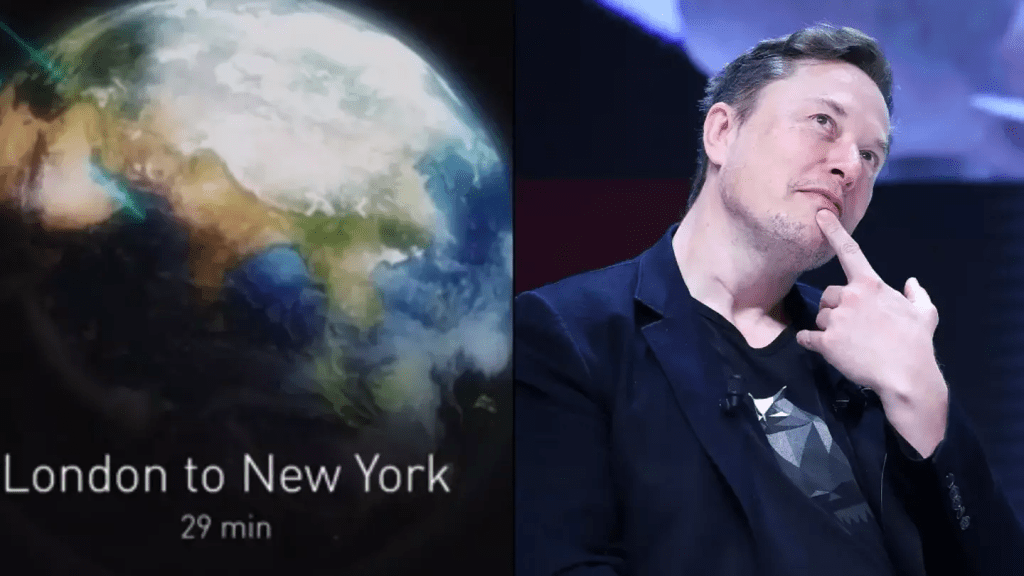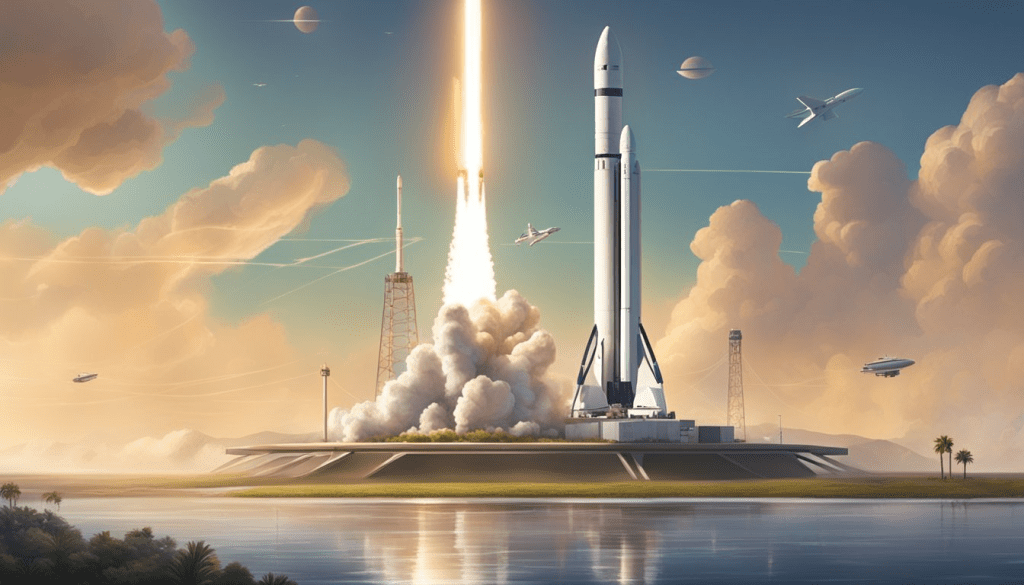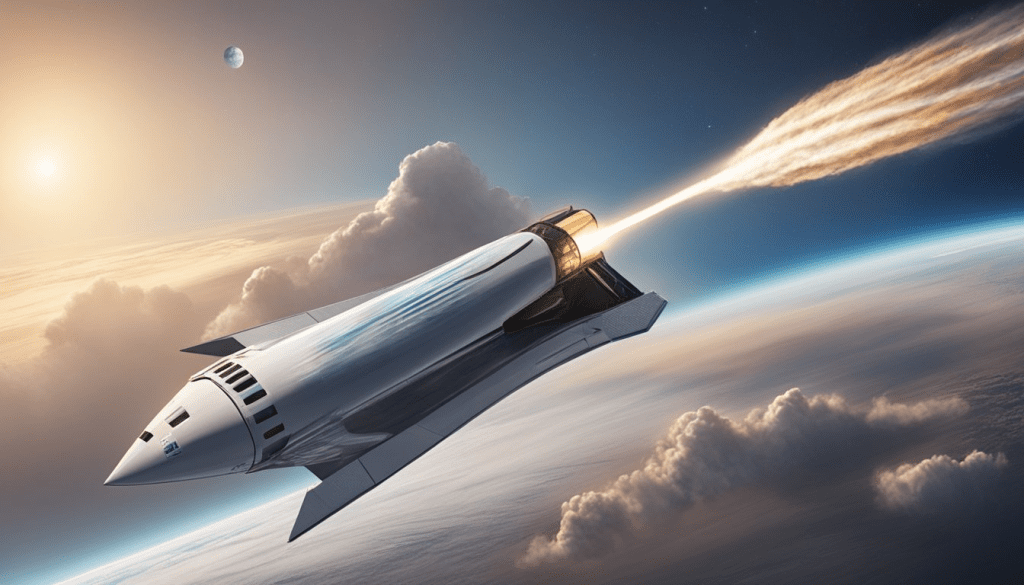Imagine zipping from London to New York in under half an hour—a journey that typically takes nearly seven hours by commercial airline. Elon Musk, CEO of SpaceX, is promising that this futuristic concept could soon become a reality. With his ambitious vision and groundbreaking Starship rocket, Musk aims to revolutionize global travel by making it possible to reach almost any destination on Earth within an hour. Here’s how SpaceX plans to turn this sci-fi dream into a practical reality.

The Power Behind the Plan: SpaceX’s Starship Rocket
At the center of Musk’s vision is the Starship rocket, the most powerful rocket ever developed by SpaceX. Originally designed for interplanetary travel to destinations like Mars, Starship has opened new possibilities for Earth-based journeys as well. Musk’s idea is simple yet groundbreaking: use the power of a space rocket to transport passengers across vast distances in record time, bypassing the limitations of traditional aircraft.
Starship’s impressive specs boast a capacity of 1,000 passengers and a top speed of 27,000 kilometers per hour (km/h), which is over 25 times the speed of the fastest commercial airliners today. For comparison, the average long-haul airliner flies at approximately 1,061 km/h. With this unprecedented speed, SpaceX says it’s possible to make journeys that typically last several hours in just 30 minutes or less.
How It Would Work: Boarding a Rocket Instead of a Plane
So, how would passengers embark on a Starship journey? The concept involves an unconventional boarding process compared to what we’re used to at airports. According to SpaceX’s vision, passengers would first board a boat that would ferry them to an offshore platform where Starship rockets are launched. These platforms, stationed at sea, serve as the departure points for rockets headed to various destinations around the world.
Once aboard, passengers would strap in, much like they would on a rollercoaster ride. The rocket would then launch, reaching mind-blowing speeds as it ascends to the edge of space before descending to the destination city. The process would be swift, and most trips between major global cities are estimated to take 30 minutes or less.
The Pros and Cons of Space Travel for Earthly Journeys
While the idea of reaching your destination in under an hour is undeniably exciting, there are some challenges and considerations that come with using rockets for passenger travel.
Pros
- Time Savings: The primary advantage of using rockets for travel is the drastic reduction in travel time. Imagine traveling from New York to Tokyo in just 30 minutes—an improvement over the typical 13-hour flight.
- Global Connectivity: This method could transform international travel, making far-off destinations accessible within minutes, fostering global connectivity like never before.
- Environmental Impact: Although rockets are notorious for their high fuel consumption, SpaceX is developing reusable rockets, which could make this method more sustainable in the long term.

Cons
- Passenger Comfort: Space travel isn’t as comfortable as commercial flights. Passengers will likely need to be restrained, similar to a rollercoaster, as moving around would be unsafe at such high speeds.
- Lack of Amenities: Musk has hinted that the flights would be minimalistic, with no toilets, food galleys, or areas to stretch. This setup would likely limit the experience to shorter journeys only, despite the fast travel times.
- Costs and Accessibility: While Musk’s vision is ambitious, making this technology affordable and accessible will be a significant challenge. Currently, space travel is expensive, and it’s unclear how accessible these journeys would be for the average traveler.
Projected Starship Flight Times Between Major Cities
SpaceX has shared projected flight times for some popular city pairs, and the numbers are mind-blowing. Here’s a look at how short these journeys could become:
- London to New York – 29 minutes
- New York to Paris – 30 minutes
- Tokyo to Delhi – 30 minutes
- Sydney to Singapore – 31 minutes
- LA to London – 32 minutes
- London to Cape Town – 34 minutes
- New York to Sydney – 49 minutes
These times illustrate just how revolutionary Starship could be, transforming what we consider a long-haul journey into a quick, near-instantaneous trip.
Safety Considerations: How Safe Is Rocket Travel for Passengers?
Safety is paramount, especially with technology as advanced and extreme as rocket travel. SpaceX has a strong track record in reusable rockets, but passenger safety introduces a new layer of complexity. To ensure safe, smooth landings, Musk envisions Starship touching down on stable platforms at sea.
One of the major concerns is how passengers will handle the intense speed and force during launch and landing. Musk has indicated that passengers would be seated with restraint systems similar to those on rollercoasters, given the need to remain still at high speeds. Although SpaceX has achieved numerous successful rocket landings, the process of accommodating hundreds of passengers safely will likely involve years of rigorous testing and compliance with aviation and space travel regulations.

Elon Musk’s Vision: What’s Driving This Innovation?
Musk’s drive to innovate isn’t new; he’s known for pushing the boundaries in everything from electric cars to space exploration. With Starship, he aims to merge space technology with everyday travel, making intercontinental journeys faster and more efficient. According to Musk, this is not just a dream but a realistic possibility. Responding to a tweet suggesting that SpaceX could gain Federal Aviation Administration (FAA) approval for Earth-to-Earth flights within a few years, Musk confidently stated, “This is now possible.”
As we look ahead, it’s clear that Musk’s goal is to reshape global travel, making it possible for people to reach any destination on Earth within an hour—a feat that would bring the world closer and redefine the concept of distance.
Could Starship Replace Traditional Air Travel?
While Musk’s vision for Starship is revolutionary, it’s unlikely to completely replace traditional air travel anytime soon. Commercial flights remain the most feasible option for the majority of travelers due to affordability, established infrastructure, and relative comfort. However, Starship could become a premium option for business travelers, international executives, or anyone willing to pay a premium for unparalleled speed.
In the coming years, we might see a niche market emerge for super-fast intercontinental travel, similar to how Concorde once provided a faster-than-jet option for those who could afford it. As the technology matures and the costs potentially decrease, rocket travel could gradually become more accessible, opening the door to a new era in transportation.
Conclusion: A New Era of Rapid Global Travel on the Horizon
Elon Musk’s vision for ultra-fast, rocket-powered travel from city to city in under an hour might sound like science fiction, but with SpaceX’s Starship technology, it’s closer to reality than ever before. By cutting down travel time drastically, this concept has the potential to transform how we view global travel, making the world more connected and accessible.
While challenges like passenger comfort, safety, and costs still need to be addressed, the future of transportation could very well include rockets as an everyday option for long-distance travel. If Musk’s plans succeed, we may soon find ourselves boarding a rocket rather than a plane, experiencing travel like never before.


